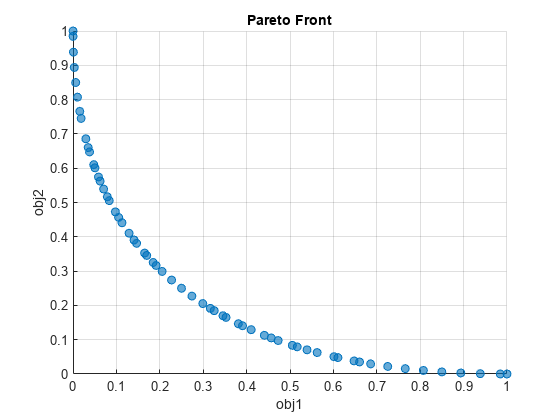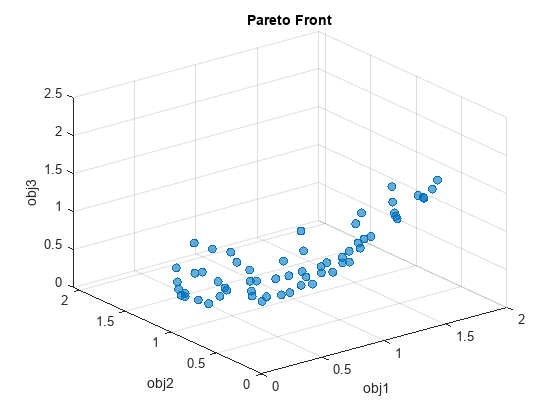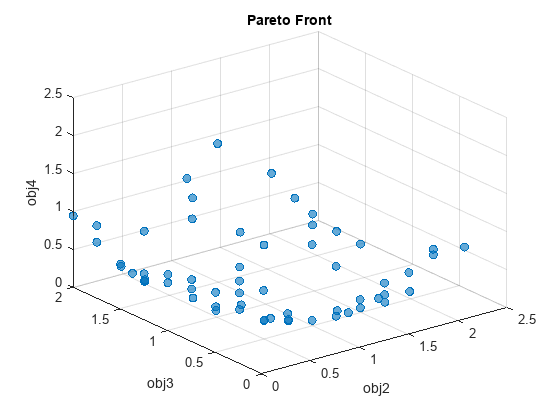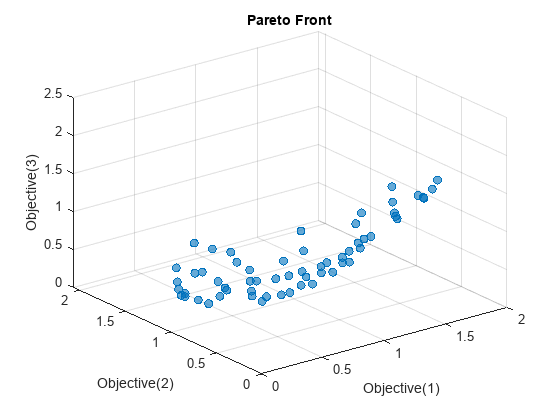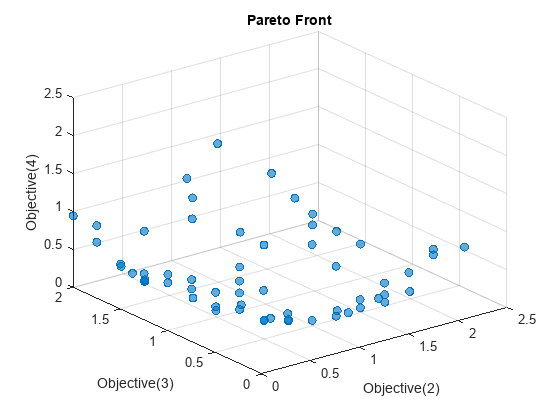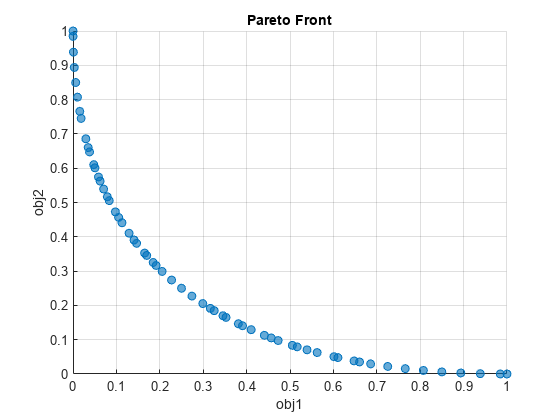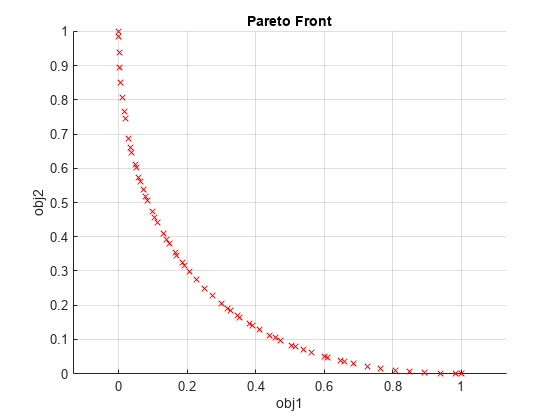paretoplot
语法
说明
对于任何先前输入的语法,h = paretoplot(___) 都会返回结果分散对象的句柄 h。创建散点图对象后,使用 h 设置其属性。
paretoplot( 将绘图绘制到带有句柄 ax,___)ax 的坐标区中。
示例
输入参数
版本历史记录
在 R2022a 中推出
另请参阅
paretosearch (Global Optimization Toolbox) | gamultiobj (Global Optimization Toolbox) | solve
主题
- Scatter 属性
- 基于问题的多目标优化的帕累托前沿 (Global Optimization Toolbox)
